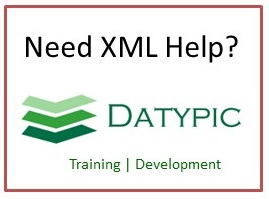CancelMatchDocument
The purpose of the CancelMatchDocument is to enable the communication of a Cancel in the MatchDocument data concerning invoice matching from another business application. The invoice matching process may include several document types, including the following: Two way match - Purchase Order and the Invoice Three way match - Purchase Order, Invoice, and the Receipt Four way match - Purchase Order, Invoice, Receipt, and Inspection results Note: For the four way match, it is assumed that inspection results have been updated on the Purchase Order for visibility in matching. When matching takes place in the purchasing application, the purchasing application may have to request the accounts payable application to provide the supplier invoice to which purchasing transactions (purchase orders, goods receiving notes and inspection tickets) are to be matched. This is the generally the situation when the invoice is initially entered into the accounts payable application. Note that in some situations, accounts payable will send invoices to the purchasing application unsolicited. In others, invoices are entered directly into the purchase order application or are created by the purchase order application when using evaluated receipt settlement (ERS) and in this instance, it is not necessary to perform the separate integration described in these chapters. When matching takes place in the accounts payable application, the purchasing application must inform the accounts payable application of the purchasing transactions (purchase orders, goods receiving notes and inspection tickets) to which the invoice (in accounts payable) is to be matched. Alternatively, the accounts payable application can request the information.
Element information
Namespace: http://www.openapplications.org/oagis/10
Schema document: CancelMatchDocument.xsd
Type: CancelMatchDocumentType
Properties: Global, Qualified, ID: oagis-id-7c1ac2bdf6d4486893956cf089e6ebd9
Content
- Sequence [1..1]
- ApplicationArea [1..1] Provides the information that an application may need to know in order to communicate in an integration of two or more business applications. The ApplicationArea is used at the applications layer of communication. While the integration frameworks web services and middleware provide the communication layer that OAGIS operates on top of.
- DataArea [1..1] Is where the information that the BOD message carries is provided, in this case CancelMatchDocument. The information consists of a Verb and one or more Nouns. The verb (Cancel) indicates the action to be performed on the Noun (MatchDocument).
from type BusinessObjectDocumentType
Attributes
| Name | Occ | Type | Description | Notes |
|---|---|---|---|---|
| releaseID | [1..1] | NormalizedStringType | OAGIS Release this BOD Instances belongs or the OAGIS release that the derivative work is based on. | from type BusinessObjectDocumentType |
| versionID | [0..1] | NormalizedStringType | Indicates the version of the given BOD definition. | from type BusinessObjectDocumentType |
| systemEnvironmentCode | [0..1] | SystemEnvironmentCodeContentType | Indicates whether this BOD is being sent in a "Test" or a "Production" mode. If the BOD is being sent in a test mode, it's information should not affect the business operation. However, if the BOD is sent in "Production" mode it is assumed that all test has been complete and the contents of the BOD are to affect the operation of the receiving business application(s). | Default value is "Production". from type BusinessObjectDocumentType |
| languageCode | [0..1] | LanguageCodeContentType | Indicates the language that the contents of the BOD is in unless otherwise stated. | Default value is "en-US". from type BusinessObjectDocumentType |
Sample instance
<CancelMatchDocument releaseID="normalizedString"> <ApplicationArea> <Sender> <LogicalID>normalizedString</LogicalID> <ComponentID>normalizedString</ComponentID> <TaskID>normalizedString</TaskID> <ReferenceID>normalizedString</ReferenceID> <ConfirmationCodes>... </ConfirmationCodes> <AuthorizationID>normalizedString</AuthorizationID> </Sender> <Receiver> <LogicalID>normalizedString</LogicalID> <ComponentID>normalizedString</ComponentID> <ID/> </Receiver> <CreationDateTime></CreationDateTime> <Signature> <!--any element--> </Signature> <ScenarioID>normalizedString</ScenarioID> <CorrelationID>normalizedString</CorrelationID> <BODID>normalizedString</BODID> <Extension> <AnyExtension> <!--any element--> </AnyExtension> <Amount/> <Code/> <DateTime></DateTime> <ID/> <Indicator>true</Indicator> <Measure/> <Name/> <Number>1.0</Number> <Quantity/> <Text/> <Time></Time> <ValueText>string</ValueText> </Extension> </ApplicationArea> <DataArea> <Cancel> <ActionCriteria>... </ActionCriteria> </Cancel> <MatchDocument> <MatchDocumentHeader>... </MatchDocumentHeader> <MatchDocumentLine>... </MatchDocumentLine> </MatchDocument> </DataArea> </CancelMatchDocument>



